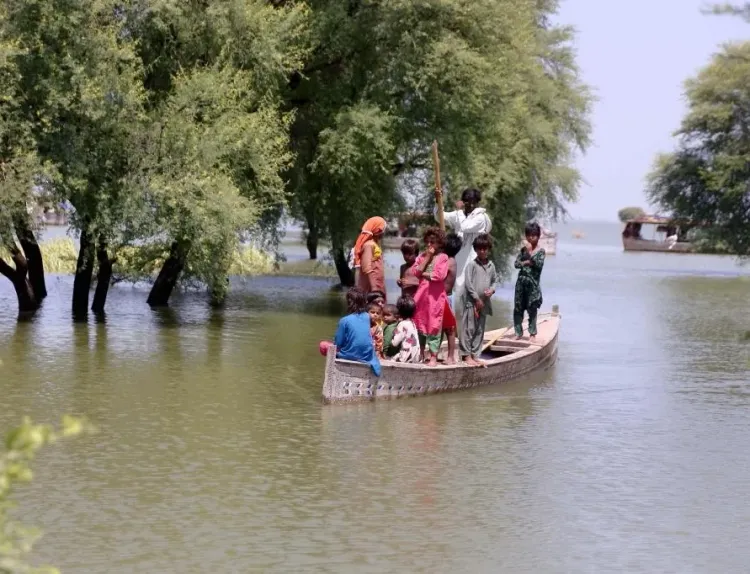How Many Lives Have Been Lost in Khyber Pakhtunkhwa Due to Rain-Related Incidents?

Synopsis
Key Takeaways
- 71 fatalities reported in Khyber Pakhtunkhwa due to rain-related incidents.
- 86 individuals injured, including men, women, and children.
- Swat district recorded the highest number of deaths.
- 358 houses damaged, with many completely destroyed.
- Authorities remain on high alert for more rain and flooding.
Islamabad, Aug 6 (NationPress) Since the onset of the monsoon season in late June, rain-related incidents in Pakistan's Khyber Pakhtunkhwa have resulted in the loss of at least 71 lives and left 86 individuals injured, as per the latest report from the Khyber Pakhtunkhwa Provincial Disaster Management Authority (PDMA). The fatalities reported include 40 children, 17 men, and 14 women.
The monsoon rains have caused extensive damage across Pakistan, leading to catastrophic floods, landslides, and mass displacement, predominantly affecting vulnerable and densely populated regions. The Swat district recorded the highest number of fatalities, totaling 22 deaths, according to the prominent daily newspaper, Dawn.
Most of the reported deaths were attributed to floods, landslides, and the collapse of infrastructure, as indicated in the PDMA report. On June 27, 17 people, primarily tourists, went missing when flash floods struck areas within the Swat and Malakand divisions. The PDMA confirmed that four individuals were rescued, while the bodies of 12 others were recovered and one person remains unaccounted for, triggering public outrage over the delayed rescue efforts.
The fatalities occurred in various districts: Swat (22), Abbotabad (5), Malakand (5), Buner (4), Charsadda (3), Upper Dir (3), Mansehra (3), Khyber (3), Bajaur (3), Lakki Marwat (3), Torghar (2), Battagram (2), Hangu (2), Shangla (2), Lower Kohistan (2), Karak (1), Kohat (1), Haripur (1), Upper Kohistan (1), and Nowshera (1).
Additionally, 86 people sustained injuries in rain-related incidents across Khyber Pakhtunkhwa, comprising 38 men, 33 children, and 15 women. The report highlights that 358 houses have been damaged since the onset of the monsoon, with 54 homes completely destroyed. The districts most affected include Swat with 63 homes lost, followed by Karak (38) and Buner (22). Moreover, 142 livestock were reported dead as a consequence of these rain-related incidents.
In response to the ongoing situation, the PDMA has urged district administrations and relevant organizations to maintain high alert levels, as the Pakistan Meteorological Department (PMD) has forecasted more intermittent to heavy rain, along with thunderstorms across the province from August 4-7.
Concurrently, the National Emergency Operation Centre (NEOC) of the National Disaster Management Authority (NDMA) has issued a flood alert for multiple regions in the country, as reported by local media on Wednesday. This warning coincides with the expectation of an intensifying monsoon system impacting the upper and central regions of Pakistan from August 5-8.
The convergence of penetrating monsoon currents and a westerly trough over northern Pakistan is anticipated to cause heavy rainfall during this period. Water levels in all major rivers, including the Indus, Chenab, and Ravi, are projected to rise, with tributaries of Ravi and Chenab likely reaching medium flood levels.
At present, the Tarbela, Guddu, and Sukkur Barrages are at low flood stages; however, persistent rain could elevate the water levels in Chashma and Taunsa towards low flood stages as well. Furthermore, the Kabul River at Nowshera, along with River Swat and Panjkora and their associated streams, may experience rising water levels due to ongoing rainfall in their catchment areas, as reported by The Express Tribune.









